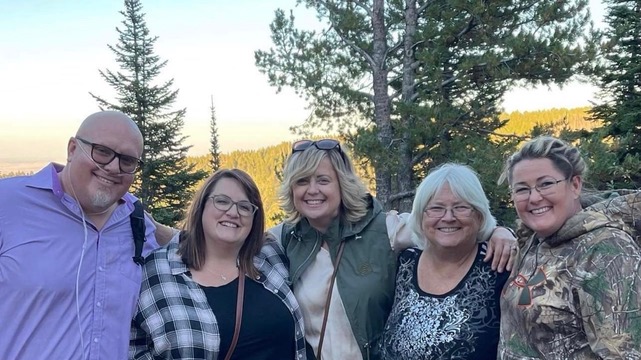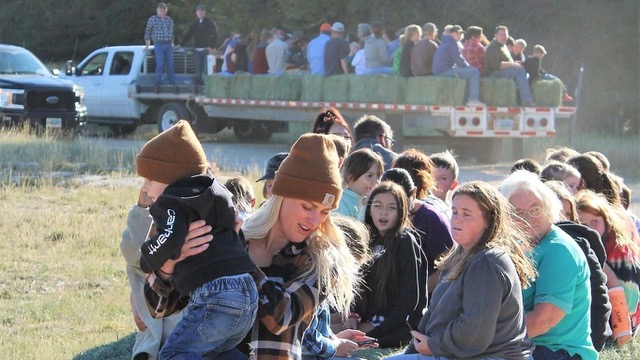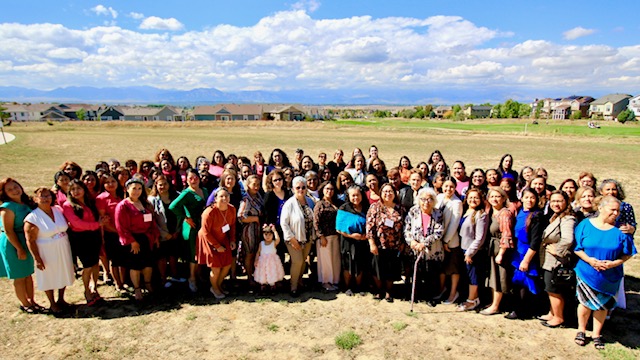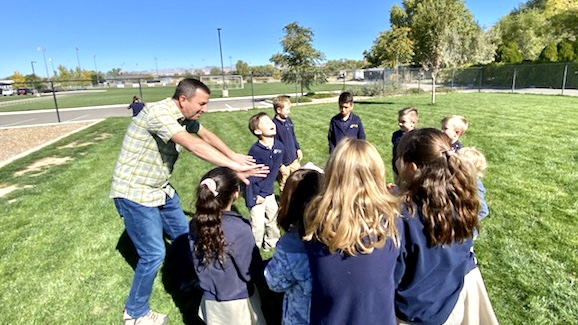I was speaking with a family who recently joined our church, having moved to Maine from another state, and I asked them what prompted them to move to our area, especially since they moved from a long way away and they had no family here.
Of course, Maine is a beautiful state with much to offer, so I’m not all that terribly surprised when people find their way here, but I’m especially intrigued when young Adventist families do so, especially ones who have no real connections to the area.
With little hesitation, the husband and wife explained that they had largely wanted to move away from the “Adventist bubble” they’d been a part of for well over a decade. There was much they appreciated about that Adventist community, especially since it provided a solid relational network and wonderful Christian fellowship and programming for their kids. But something was missing in their religious experience.
That something, mainly, was being a part of their non-Adventist community.
They had become so absorbed with and involved in all the great things that being a part of a larger Adventist community provides people, that they found it hard to immerse themselves in the much larger non-Adventist community just outside their door.
Of course, one doesn’t necessarily have to choose between the two. One can, theoretically, live in a community with a high concentration of Seventh-day Adventists and yet still be heavily involved with the (many more) non-Adventists in that community.
But as we all agreed during our conversation, it just seems like whenever one lives in close proximity to a community with a high concentration of Adventists—due to, say, an Adventist hospital or college or academy—it inevitably becomes a sort of vortex of activity and attention. It’s so easy to get sucked into and participate almost exclusively with all the Adventist stuff going on.
But is that the life we’re called to live?
It reminds me of another conversation I had with a friend of mine here in my city who is a Jewish rabbi, leading one of the three Jewish congregations in Bangor. One day, as we were talking, he somehow got to explaining how he fantasized about living in Israel. Despite having been born and raised in America, it would be a dream come true to live there, he told me.
“Why is that?” I wondered.
Because, he explained, it would be amazing to live in a place where everything was oriented around Judaism—to live in a country where just about everyone was Jewish; where everyone ordered their lives around the ways, customs, and culture of his faith.
It’s natural, of course, to gravitate towards peoples and communities that look like us, talk like us, think like us, eat like us, dress like us, believe like us. It’s very reassuring and comforting, giving us ample opportunity to participate in the practices and values that are most important to us.
But is that the life we’re called to live?
What if, instead, one of our core values was living with and participating in community that didn’t look like us, eat like us, dress like us, behave like us, and believe like us? What if we were so grounded in the gospel that our highest joy was surrounding ourselves with and being among people who are different than us?
That’s what my dream for Adventism would be—what it would look like if I could reimagine it.
In short, a church that wasn’t so enamored with and focused on itself, characterized by people who were so afraid of the outside world or so doggedly comfortable with just being with and listening to one another, that we, filled with the gospel, lived among and with the 99.9% of the population that comprises the rest of the world.
“In” not “of”?
In Christ’s last prayer, as recorded by John, He explained that He didn’t hope His Father would take His disciples “out of the world.” He wanted them to remain in the world to participate in His mission. “I do not pray that You should take them out of the world,” He said, “but that You should keep them from the evil one” (John 17:15). A few verses later He further clarified: “As You sent Me into the world, I also sent them into the world” (v. 18).
This is where we get the popular idea that Christians should be “in the world” but not “of the world.”
Though such a phrase has probably reached the status of cliché, and there is seemingly quite a bit of truth to it, in my experience, it feels like most of the time it’s used, it emphasizes the latter part of it. Most of the people who I’ve heard cite this idea focus on the part where we should not be “of” the world. By this, it seems like they generally mean we shouldn’t listen to “worldly” music, watch “worldly” entertainment, or wear “worldly” clothes.
I don’t necessarily believe Jesus had that in mind though. While this is, in many ways, a whole other topic that deserves its own extended discussion, Jesus nowhere singles out such things as being “worldly.” I think He was probably talking more about the attitudes and priorities of the heart, which can be expressed through any and all forms and styles of music, dress, and entertainment (one can be just as “worldly” when singing a hymn as when singing a contemporary worship song).
The point here though is that we don’t seem to spend as much time on the being “in the world” part. But Jesus made it clear: the disciples’ mission was to be in the world. Just as He had been sent into the world by His Father, He was sending the disciples as well.
A few years ago, I came across a thought from Ellen White that gives interesting insight into the way Jesus lived “in” the world. “Though He was a Jew, Jesus mingled freely with the Samaritans,” she explains, “setting at naught the Pharisaic customs of His nation. In face of their prejudices, He accepted the hospitality of this despised people. He slept with them under their roofs, ate with them at their tables, partaking of the food prepared and served by their hands, taught in their streets, and treated them with the utmost kindness and courtesy. And while He drew their hearts to Him by the tie of human sympathy, His divine grace brought to them the salvation which the Jews rejected” (The Ministry of Healing, p. 26).
Talk about being radically “in” the world! The Samaritans were despised religious outsiders to Jews. They were “unclean.” They weren’t good “Adventists.” And yet Christ stayed at their homes, ate their questionable food, and recognized and honored their dignity.
How does that align with your own life and practice?
Again, what if Adventism was so grounded in the reality of the gospel—so clear on how God, in Christ, “moved into the neighborhood,” as The Message renders John 1:14—that we felt secure enough to bust out of our Adventist bubbles and live with and among those who don’t share our customs, culture, or beliefs?
Such a posture wouldn’t require us to diminish our belief in and practice of the “truth.” On the contrary, it would actually be the precise outworking of that truth, recognizing that the gospel, and the Adventist understanding of the gospel, invites us to step into the lives of “every nation, tribe, tongue, and people” (Revelation 14:6).
During the course of my conversation with our new friends who’d moved to our area and joined our church, the wife explained to me that they actually wouldn’t be at our worship gathering the next Sabbath. “We’ve been invited by our neighbor to his harvest party,” she explained to me. “Everyone from the neighborhood is going to be there.” They had decided to forgo worshipping with church people in order to live out the gospel with non-church people.
I just got a big smile on my face. I loved it.
I think it’s critically important to gather with God’s people regularly. We need that fellowship and encouragement. But just as important as gathering with God’s people, as I understand it, is gathering with those who aren’t consciously God’s people. We are called to be salt, shaken out of the Adventist salt-shaker and into the world.
It’s a core value of our local congregation and the main reason why this young family decided to become members of our particular church. They know what we’re about (however imperfectly we execute it).
What would Adventism look like if I reimagined it?
Just that: Adventists, being so grounded in the gospel that they showed up to parties their non-Adventist neighbors put on, living as salt and light, instead of clinging together—either because they’re scared of the world or most comfortable with people who are just like them.
Shawn Brace is a pastor in Bangor, Maine, whose life, ministry, and writing focus on incarnational expressions of faith. The author of four books and a columnist for Adventist Review, he is also a DPhil student at the University of Oxford, focusing on nineteenth-century American Christianity. You can follow him on Instagram and Twitter @shawnbrace, and sign up for his weekly newsletter at shawnbrace.substack.com





